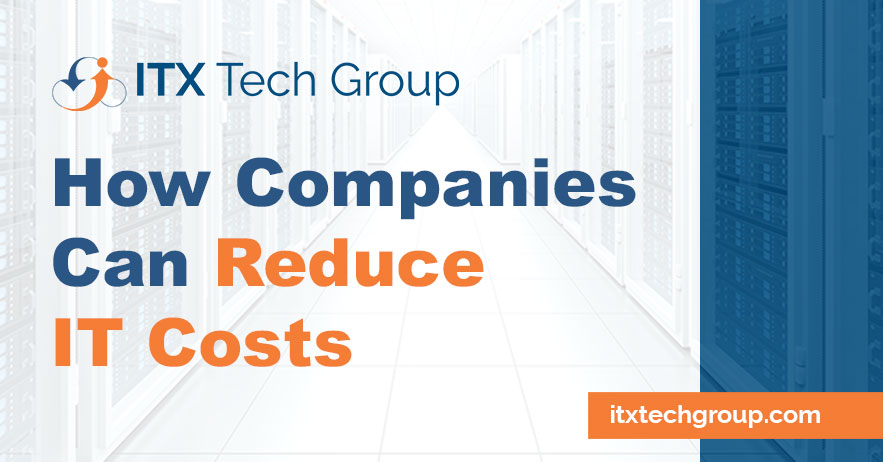In today’s highly competitive business landscape, cost optimization is a top priority for companies of all sizes.
Among the various departments, IT costs can be a significant portion of the budget, making it an area ripe for potential savings.
However, reducing IT costs should not come at the expense of sacrificing efficiency or compromising on security.
In this comprehensive blog article, we will explore several effective strategies that companies can employ to lower IT expenses while maintaining productivity, security, and overall business performance.
Embrace Cloud Computing
Moving to the cloud offers a myriad of benefits, including reduced hardware costs, streamlined maintenance, and enhanced scalability.
Cloud computing eliminates the need for extensive on-premises infrastructure and hardware investments, making it an attractive cost-saving option.
Cloud service providers offer flexible pay-as-you-go pricing models, allowing companies to scale resources based on demand, leading to more efficient allocation of IT budgets.
Virtualization and Consolidation
Virtualization technologies enable companies to run multiple virtual machines on a single physical server, effectively consolidating hardware resources.
By doing so, businesses can optimize hardware utilization, reduce power consumption, and decrease physical server maintenance costs.
Additionally, virtualization enhances disaster recovery capabilities, which can lead to potential savings in the event of a system failure or data loss.
Optimize Software Licensing
Regularly reviewing and optimizing software licensing agreements is an essential step in controlling IT costs.
Companies should assess their software needs and eliminate redundant or underutilized licenses. Negotiating volume licensing agreements with vendors or considering open-source alternatives can also lead to significant cost reductions without compromising on software functionality.
Implement IT Asset Management (ITAM)
IT asset management helps companies track, manage, and optimize their IT assets throughout their lifecycle.
By maintaining a detailed inventory of hardware and software assets, businesses can identify unused or outdated equipment, reduce overspending, and make informed decisions about asset refresh cycles.
ITAM also helps avoid unnecessary penalties resulting from non-compliance with software licensing agreements.
Outsource IT Services
Outsourcing IT services to Managed Service Providers (MSPs) or IT consulting firms can be a cost-effective solution for many companies.
MSPs offer specialized expertise and 24/7 support, eliminating the need to hire and train an in-house IT team. Outsourcing allows businesses to convert fixed IT costs into variable expenses, paying only for the services they need, reducing overhead, and enabling greater budget control.
Encourage Employee Training
Investing in employee training and development can lead to long-term IT cost reductions. Well-trained employees can handle routine IT tasks, reducing the reliance on external support or consultants.
Providing training on cybersecurity best practices can also significantly mitigate the risk of security breaches, which could result in costly data breaches and potential legal liabilities.
Energy Efficiency and Green IT
Reducing energy consumption not only helps the environment but also leads to substantial cost savings over time.
Adopting energy-efficient hardware, implementing power management policies, and optimizing cooling systems in data centers can significantly reduce electricity expenses.
Embracing green IT practices not only cuts costs but also enhances your company’s sustainability image, which can be a competitive advantage.
Negotiate Service Contracts
When renewing service contracts with vendors, it’s essential to negotiate favorable terms. Explore the possibility of bundling services or requesting volume discounts.
Comparative analysis of competing vendors can provide leverage during negotiations, potentially leading to cost reductions without compromising service quality.
Conclusion
Reducing IT costs is an ongoing process that requires a strategic and holistic approach. By embracing cloud computing, virtualization, and IT asset management, companies can optimize resource utilization and eliminate unnecessary expenses.
Outsourcing IT services and investing in employee training further contribute to long-term savings while maintaining high-quality support.
Additionally, companies should explore green IT practices, renegotiate service contracts, and optimize software licensing to bolster cost-effectiveness.
By implementing these strategies, businesses can achieve a leaner, more efficient IT infrastructure that aligns with their overall financial goals and positions them for success in a competitive marketplace.
ITX Tech Group has been serving small, medium, and large scale businesses with their IT support needs all over the United States since 2011, so we’re confident we can provide you with affordable, professional IT solutions for years to come!
Connect with us for a free consultation to discuss your business technology needs.

